COSMETIC DENTISTRY
COSMETIC DENTISTRY
Crowns
A crown is a cap that is placed over a tooth and held in place by dental adhesive or cement. Crowns can be made from a variety of materials. They can be made from plastic, ceramic or metal alloys. A combination of metal and ceramic is also possible to maximise strength and simulate the appearance of natural teeth.
Crowns are used for several reasons:
as a protective cover for badly decayed teeth or fractured teeth
to correct minor problems in natural teeth like spacing and irregular shape or severe discolouration.
Firstly, a thorough clinical examination is conducted with radiographs, by the dentist. The suitability for crowns is assessed and any preparatory work is carried out. Your dentist will also be able to advise on material choices, treatment sequence and any other concerns you may have.
At the second appointment, the teeth to be crowned are prepared. This involves reduction of the tooth size (usually under local anaesthesia) followed by an impression or mould of the prepared tooth. This trimming of the tooth is required to create space for the crown to be fitted.
At the third appointment, the temporary crown is removed and the tooth surfaces cleaned. The completed crown is tried on the tooth for fit, harmony with the bite, and appearance. Finally, the crown is cemented onto the prepared tooth with dental cement.
Regular check-ups will enable your dentist to detect any problems with your crown and recommend necessary treatment.
Crowns
A crown is a cap that is placed over a tooth and held in place by dental adhesive or cement. Crowns can be made from a variety of materials. They can be made from plastic, ceramic or metal alloys. A combination of metal and ceramic is also possible to maximise strength and simulate the appearance of natural teeth.
Crowns are used for several reasons:
as a protective cover for badly decayed teeth or fractured teeth
to correct minor problems in natural teeth like spacing and irregular shape or severe discolouration.
Firstly, a thorough clinical examination is conducted with radiographs, by the dentist. The suitability for crowns is assessed and any preparatory work is carried out. Your dentist will also be able to advise on material choices, treatment sequence and any other concerns you may have.
At the second appointment, the teeth to be crowned are prepared. This involves reduction of the tooth size (usually under local anaesthesia) followed by an impression or mould of the prepared tooth. This trimming of the tooth is required to create space for the crown to be fitted.
At the third appointment, the temporary crown is removed and the tooth surfaces cleaned. The completed crown is tried on the tooth for fit, harmony with the bite, and appearance. Finally, the crown is cemented onto the prepared tooth with dental cement.
Regular check-ups will enable your dentist to detect any problems with your crown and recommend necessary treatment.
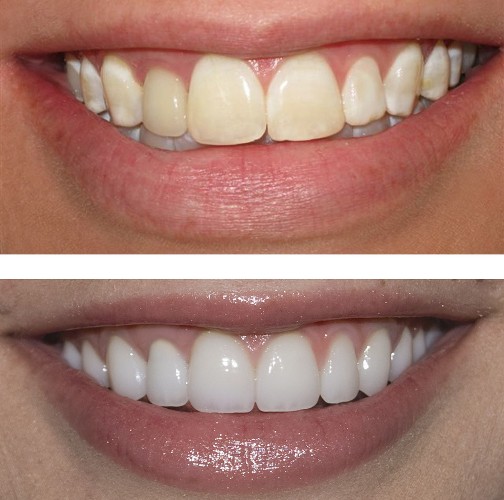
Teeth Whitening
Whitening is a process where the tooth discolouration is ‘whitened’ to a lighter shade. It removes the staining agent through chemical means. It is a safe procedure when carried out under professional supervision. Treatment results usually depend on the severity of the discolouration. Both vital (i.e. live) and non-vital teeth (e.g. tooth with root removed) can be bleached and may take several visits to complete. It is not effective on dental restorations such as amalgam fillings, metal or porcelain crowns, etc.
Teeth can discolour for various reasons. The dentist will recommend the most ideal method based on your oral condition after an in-office examination to establish the cause and nature of your tooth discolouration, as well as provide you with more information on the various types of whitening procedures available, duration & frequency of treatment.
Teeth Whitening

Whitening is a process where the tooth discolouration is ‘whitened’ to a lighter shade. It removes the staining agent through chemical means. It is a safe procedure when carried out under professional supervision. Treatment results usually depend on the severity of the discolouration. Both vital (i.e. live) and non-vital teeth (e.g. tooth with root removed) can be bleached and may take several visits to complete. It is not effective on dental restorations such as amalgam fillings, metal or porcelain crowns, etc.
Teeth can discolour for various reasons. The dentist will recommend the most ideal method based on your oral condition after an in-office examination to establish the cause and nature of your tooth discolouration, as well as provide you with more information on the various types of whitening procedures available, duration & frequency of treatment.
Porcelain Veneers
Porcelain veneers are custom made shells, wafer-thin, that are used to cover the front surface of teeth. They are bonded to the front teeth changing their shape, size and color to imrpove your apperance.
Types of problems fixed with Porcelain Veneers
- Broken or chipped teeth
- Worn down teeth
- Discoloured teeth
- Misaligned, uneven, or irregularly shaped teeth
- Teeth with gaps between them
Porcelain Veneers Procedure
It usually requires 3 visits to complete your porcelain veneers procedure. During the first visit, you will have your consultation, on which you will discuss with your dentist the the result you want to achieve. Then, your dentist will examine your teeth to make sure the porcelain veneers are right fo you.
On the next visit, your dentist will make an impression or a model of your tooth, which will be sent to a dental laboratory to make your porcelain veneer. In the meantime, temporary veneers can be used.
During the third visit is taking place the bonding phase of the porcelain veneers. On this phase, your dentist will place the porcelain veneers on your teeth and make all necessary adjustments to make sure you have a proper fit. The color of the veneer can be adjusted too to match your teeth.
You may be asked for a follow up appointment in a couple of weeks to check your gums and the veneer’s placement.
Porcelain Veneers Advantages
- Natural teeth appearance
- They are stained resistant
- A colour can be adjusted
- Gums tolerates porcelain well
- They are stronger and look better than crowns
- They don’t require as much shaping as crowns
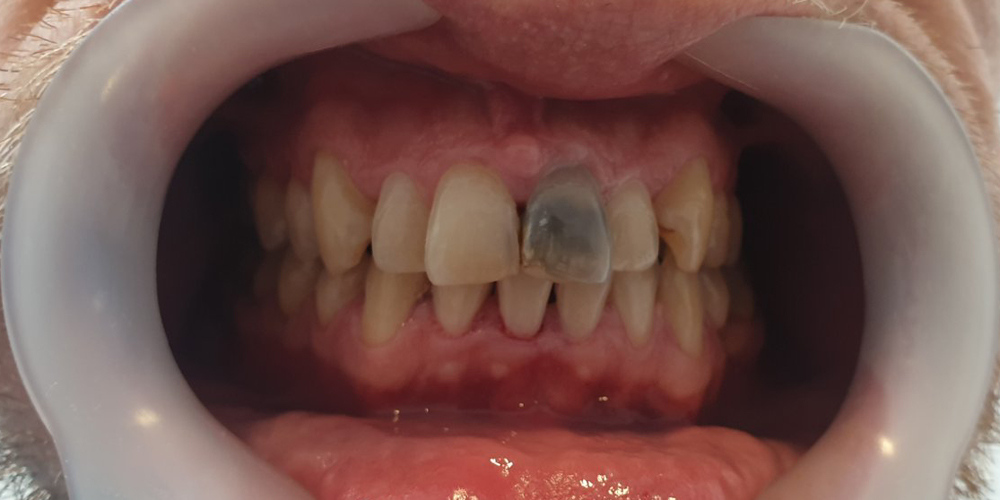


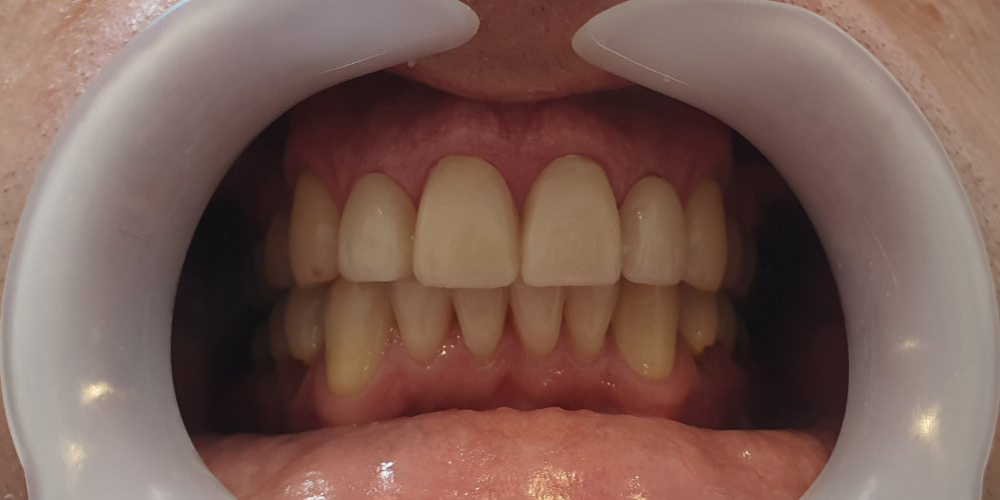


Porcelain Veneers






Porcelain veneers are custom made shells, wafer-thin, that are used to cover the front surface of teeth. They are bonded to the front teeth changing their shape, size and color to imrpove your apperance.
Types of problems fixed with Porcelain Veneers
-
- Broken or chipped teeth
- Worn down teeth
- Discoloured teeth
- Misaligned, uneven, or irregularly shaped teeth
- Teeth with gaps between them
Porcelain Veneers Procedure
It usually requires 3 visits to complete your porcelain veneers procedure. During the first visit, you will have your consultation, on which you will discuss with your dentist the the result you want to achieve. Then, your dentist will examine your teeth to make sure the porcelain veneers are right fo you.
On the next visit, your dentist will make an impression or a model of your tooth, which will be sent to a dental laboratory to make your porcelain veneer. In the meantime, temporary veneers can be used.
During the third visit is taking place the bonding phase of the porcelain veneers. On this phase, your dentist will place the porcelain veneers on your teeth and make all necessary adjustments to make sure you have a proper fit. The color of the veneer can be adjusted too to match your teeth.
You may be asked for a follow up appointment in a couple of weeks to check your gums and the veneer’s placement.
Porcelain Veneers Advantages
-
- Natural teeth appearance
- They are stained resistant
- A colour can be adjusted
- Gums tolerates porcelain well
- They are stronger and look better than crowns
- They don’t require as much shaping as crowns


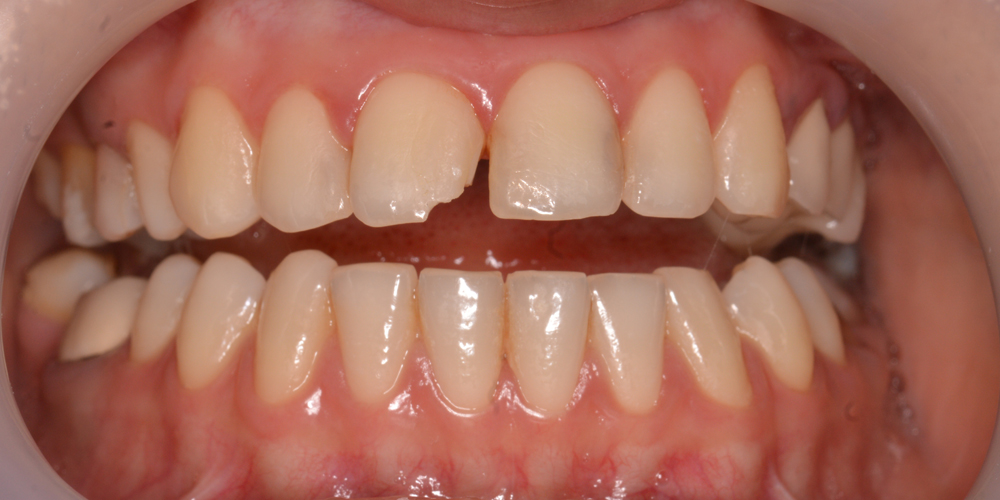

Bonding (Composite Veneers)
Dental bonding is the easiest and least expensive cosmetic procedure. With dental bonding, we apply a tooth-coloured resin, which is hardened with a special light to the tooth, to improve a person’s smile.
Types of problems fixed with dental bonding
-
- Broken or chipped teeth
- Worn down teeth
- Discoloured teeth
- Misaligned, uneven, or irregularly shaped teeth
- Teeth with gaps between them
- Exposed tooth root when gums recede
- Decayed teeth by filling cavities
Composite Veneers Advantages
-
- They are less expensive than porcelain veneers
- They can be applied in one visit
- They be used as a cosmetic alternative to silver amalgam fillings
Composite Veneers Disadvantages
-
- They are not completely stained resistant as the porcelain veneers
- They are not as strong as crowns and porcelain veneers
- They are suitable for smaller cosmetic changes
- They can chip, so you should avoid bad habits as biting your nails, pens or ice
Bonding (Composite Veneers)




Dental bonding is the easiest and least expensive cosmetic procedure. With dental bonding, we apply a tooth-coloured resin, which is hardened with a special light to the tooth, to improve a person’s smile.
Types of problems fixed with dental bonding
-
- Broken or chipped teeth
- Worn down teeth
- Discoloured teeth
- Misaligned, uneven, or irregularly shaped teeth
- Teeth with gaps between them
- Exposed tooth root when gums recede
- Decayed teeth by filling cavities
Composite Veneers Advantages
-
- They are less expensive than porcelain veneers
- They can be applied in one visit
- They be used as a cosmetic alternative to silver amalgam fillings
Composite Veneers Disadvantages
-
- They are not completely stained resistant as the porcelain veneers
- They are not as strong as crowns and porcelain veneers
- They are suitable for smaller cosmetic changes
- They can chip, so you should avoid bad habits as biting your nails, pens or ice
Inlays and Onlays
Inlays and onlays are made outside of the mouth as a single solid piece. This solid piece fits the specific shape and size of the cavity, which, at the final stage is cemented in place in the tooth. Therefore they can be considered as a form of indirect restoration. They fall somewhere between fillings and dental crowns, as they are used to restore cavities that are too large for fillings but can be managed without installing crowns.
As inlays and onlays are custom made, they offer a much better fit than other restorations. They can also be used for tight spaces, that is, for cavities between the teeth. The customized fitting allows for excellent interproximal contact, making repeated decay almost impossible. Though inlays and onlays are more expensive than direct fillings, the benefits they offer in terms of longevity and maintenance of dental health compensates for the extra cost.
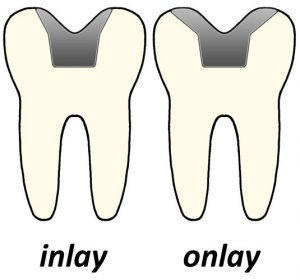
Inlays and Onlays

Inlays and onlays are made outside of the mouth as a single solid piece. This solid piece fits the specific shape and size of the cavity, which, at the final stage is cemented in place in the tooth. Therefore they can be considered as a form of indirect restoration. They fall somewhere between fillings and dental crowns, as they are used to restore cavities that are too large for fillings but can be managed without installing crowns.
As inlays and onlays are custom made, they offer a much better fit than other restorations. They can also be used for tight spaces, that is, for cavities between the teeth. The customized fitting allows for excellent interproximal contact, making repeated decay almost impossible. Though inlays and onlays are more expensive than direct fillings, the benefits they offer in terms of longevity and maintenance of dental health compensates for the extra cost.